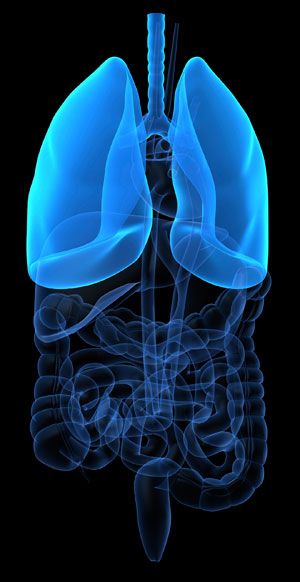Study Identifies Subset of NSCLC Patients Who Experience Hyperprogression After Immunotherapy
A multicenter retrospective analysis presented at the 2017 ESMO Congress found that a newly defined subset of patients treated with anti-PD-1/PD-L1 immunotherapy experienced accelerated tumor growth indicative of hyperprogressive disease (HPD).
lung cancer

A multicenter retrospective analysis presented at the 2017 ESMO Congress found that a newly defined subset of patients treated with anti-PD-1/PD-L1 immunotherapy experienced accelerated tumor growth indicative of hyperprogressive disease (HPD).
The analysis of patients with NSCLC treated with the checkpoint blockade antibodies determined that 16% had HPD, which negatively affected their overall survival (OS) and progression-free survival (PFS) compared with patients without HPD. The study examined results for 242 patients treated in 5 institutions in France between November 2012 and March 2017. A previous single-institution study had shown a 10% HPD rate after PD-1/PD-L1 therapy.
“The incidence of HPD is about 9% in cancer patients overall,” said lead study author Roberto Ferrara, MD, in an interview withTargeted Oncology. “Immunotherapy makes the tumors grow faster in a subset of patients; we need to know the biology behind this to identify the patients at risk for HPD.”
Ferrara and colleagues garnered one of the Best Poster awards at the 2017 ESMO Congress for their research. “We previously described HPD in 10% of 89 NSCLC patients treated with immunotherapy in a single institution using tumor growth rate [TGR] to define HPD. In this study, we explored HPD in a larger and multicenter cohort of advanced NSCLC patients treated with immunotherapy,” said Ferrara, of the Institut Gustave Roussy in Villejuif, France.
HPD is more rapid than typical disease progression and has an impact on OS, investigators found. In this study, patients with HPD had a median OS of 3.3 months (95% CI,1.8-5.8) while those with progression according to RECIST criteria had median OS of 5.7 months (95% CI 4.0-6.8;P= .011).
Similarly, patients with HPD experienced significantly shorter median PFS of 1.4 months compared with 4.9 months for the not-HPD population (P<.001); median OS was also shorter at 3.3 versus 17 months, respectively, for the 2 cohorts (P< .001).
Overall, in the general study population, median OS was 13.4 months (range, 9-42 months) at a median follow-up of 10 months (range, 8-12 months).
In order to measure progression, every patient was required to have 3 CT scans performed before immunotherapy treatment, at baseline, and during immunotherapy treatment that were centrally reviewed by a senior radiologist and assessed according to RECIST 1.1 criteria.
The baseline TGR was determined prior to treatment based upon the baseline CT scan and then compared with the midtreatment CT scan; TGR during immunotherapy was based on the comparison between baseline and treatment CT scans and the variation per month of TGR between both (delta TGR). Patients were identified as having HPD if the absolute delta TGR increased by at least 50%.
Of the 242 eligible patients, 64% were male, half were 65 years or older, 51% were smokers, and 10% had ECOG PS ≥ 2. Histology was primarily adenocarcinoma in 63% of patients. Nineteen percent of patients had NSCLC tumors with a KRAS mutation, 2% had an EGFR mutation, 2% had an ALK rearrangement, and the molecular status was unknown in 35% of patients. PD-L1 expression was positive in 12% of patients, negative in 11%, and unknown in 77% of study participants.
More than 90% of the recipients received a single-agent PD-1 inhibitor as second-line or greater therapy. Most patients (64%) showing a decrease in TGR from baseline (delta TGR ≤0). Thirty-six percent of participants (n = 87) showed an increase in TGR from baseline (delta TGR >0), demonstrating nonregressing tumors.
Among the total population, 16% (n = 40) had HPD per the study protocol definition. Pseudoprogression was confirmed in 3 patients (1.2%), with 2 of these patients initially designated as having HPD.
In the overall patient population, the response rate (RR) was 15% including complete or partial responses, while 39% had stable disease and 45% had progressive disease. Median PFS was 3.9 months (range, 3 to 5 months).
Tumor burden at baseline, clinical, molecular, and pathological characteristics, as well as PD-L1 status and the response to treatment administered prior to immunotherapy were compared between patients with HPD versus those without it. The analysis revealed 60% of patients with HPD had more than 2 metastatic sites at baseline compared with 42% of patients who did not develop HPD. There was no difference in RR or PD-L1 status between patients with had HPD versus those who did not.
“Further work is needed to better characterize the population of patients at risk of HPD,” said Ferrara.
Jair Bar MD, PhD, who served as a session discussant, noted the significance of the issue. “HPD is an emerging pattern of progression in patients treated with immunotherapy that is a critically important issue to study,” said Bar, who is head of the thoracic oncology unit at the Institute of Oncology at Sheba Academic Medical Center in Tel Hashomer, Israel.
However, he questioned the authors’ definition of HPD. “The previous and first report of HPD defined HPD as a 2-fold increase of TGR. Why change the HPD definition? Very strict definitions are needed. Additionally, more studies are required to understand the mechanism and whether HPD also occurs with chemotherapy or targeted agents.”
Reference:
Ferrara R, Caramella C, Texier M, et al. Hyperprogressive disease (HPD) is frequent in non-small cell lung cancer (NSCLC) patients (pts) treated with anti PD1/PD-L1 monoclonal antibodies (IO). Presented at: 2017 ESMO Congress; September 8-12, 2017; Madrid, Spain. Abstract 1306PD.